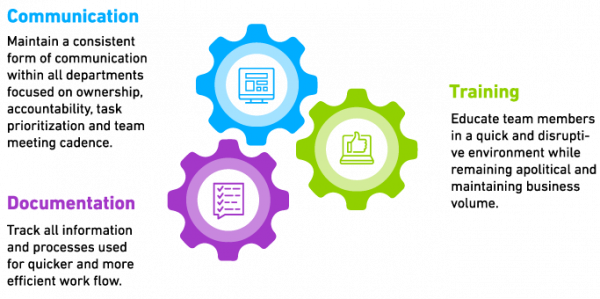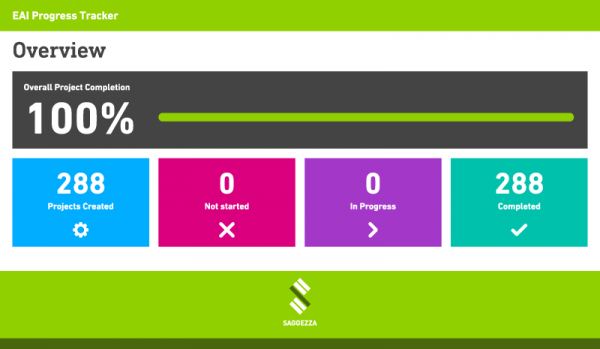
Breaking Up is Hard To Do

The Brief
Apexon’s client, a global logistics company, made the decision to spin-off into three distinct companies. The company’s separation provided a unique opportunity to unlock value as well as restructure and optimize the businesses’ operating models. Apexon was poised to bring our domain expertise and deep familiarity with the organization to bear.
The Challenge
In order to complete the full divestiture, the three eventual new companies required their own completely independent application landscapes, including many applications requiring complex integrations, both internal and third-party.
In any divestiture or spin-off, much of the difficulty revolves around accomplishing the spin while maintaining operability. In defining the success of the spin project and overall application integration work, Apexon identified a series of critical points upon which to focus:
- Consistent executive sponsorship, reporting awareness, and team meeting cadence
- Clear lines of communication established from PMO up to executive sponsors and down to project resources
- Project team personal ownership and accountability for solutions and on-time delivery to deadlines
- Collaborative and creative solution design environment
- Methodical and tenacious execution on a predefined and well thought-out project plan
Specifically, our client faced potential operational challenges with legacy systems and their interoperability with other, more recent, enterprise systems built on multiple platforms. The client’s increasing business volume also posed a major challenge in handling their customers’ needs during the spin-off, as their systems demanded high interoperability and flexibility. From an EAI standpoint, Apexon focused on:
- Gaining trust and learning fast, educating team members in a challenging and potentially disruptive environment while remaining apolitical
- Remediating the lack of documentation across the entire application landscape
- Maintaining business volume
- Prioritization of work and task clarity for all contributors
- Customer/client designation (breaking vs. non)
- Risk management and escalation
The Solution
PROGRAM MANAGEMENT
Apexon developed a series of customized solutions to communicate with and enable the executive steering committee overseeing the spin-off. With a clear focus on communication, reporting, and reporting structure, Apexon served as PMO for 10 key IT groups (including infrastructure, ops, and coached lead).
While working to build clear lines of communication between client staff and team members, Apexon remained apolitical in a high-stress business environment. Building clarity, Apexon helped to communicate and execute the leadership mandate and the scope of financially impacting and highly disruptive applications for phase one, soft-spin launches, prior to the final go-live date. Additionally, the team maintained requirements for SOX compliance testing and validation.
Crucially, the team identified these disruptive applications, escalating risk and providing fallback strategies as appropriate.

ENTERPRISE APPLICATION INTEGRATION
Outside broad program management and reporting, Apexon was brought on to create the delivery of the solution framework and broadly coordinate the program plan, addressing all the integration challenges at the enterprise level and enable communication via various channels without impacting existing systems. The EAI framework allowed scalable configurations to integrate different systems/applications within the enterprise at different intervals, allowing for greater flexibility during the transition.
Quickly ramping up on domain knowledge, Apexon touched on over 65 application groups including everything from customer service and invoicing to fulfillment and distribution.
The Results
The EAI framework functioned as a central hub, with a customized dashboard featuring a variety of metrics. The EAI Progress Tracker (below) was built to monitor and manage integrations and clarify reporting and controlling integration operations at various levels.
The communications hub also served to clarify the definition of done for the overall spin process and was a key tool in communicating program milestones with the executive steering committee.
